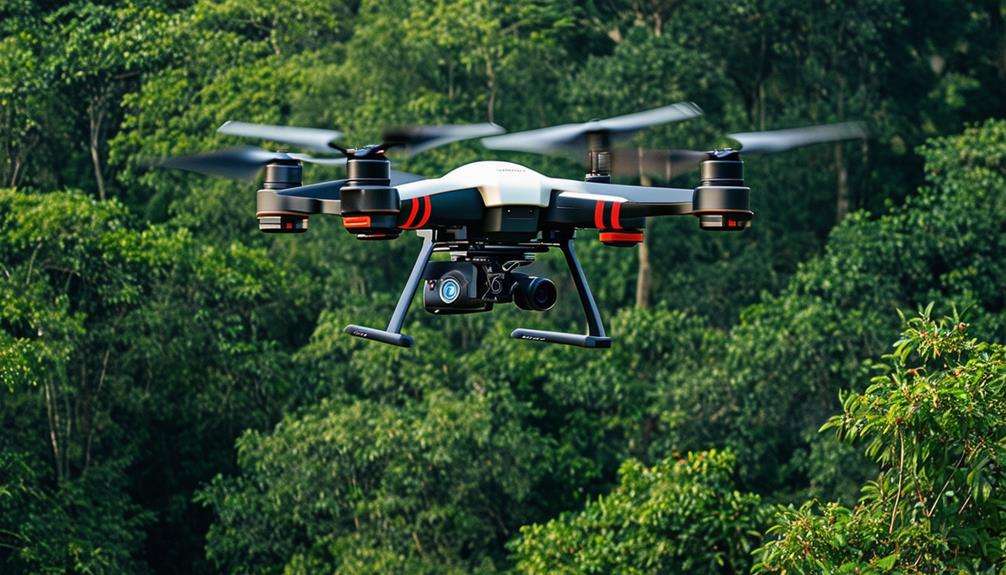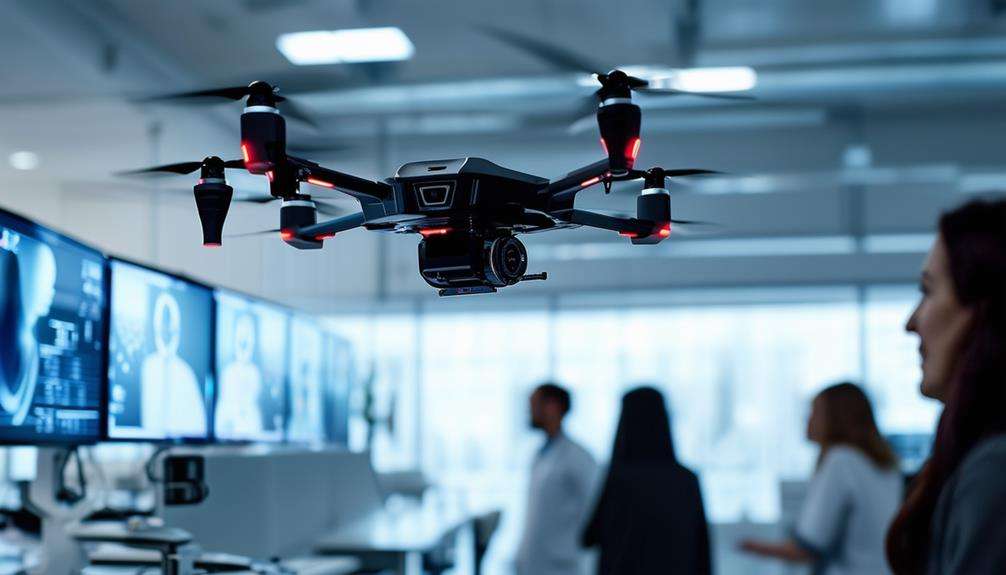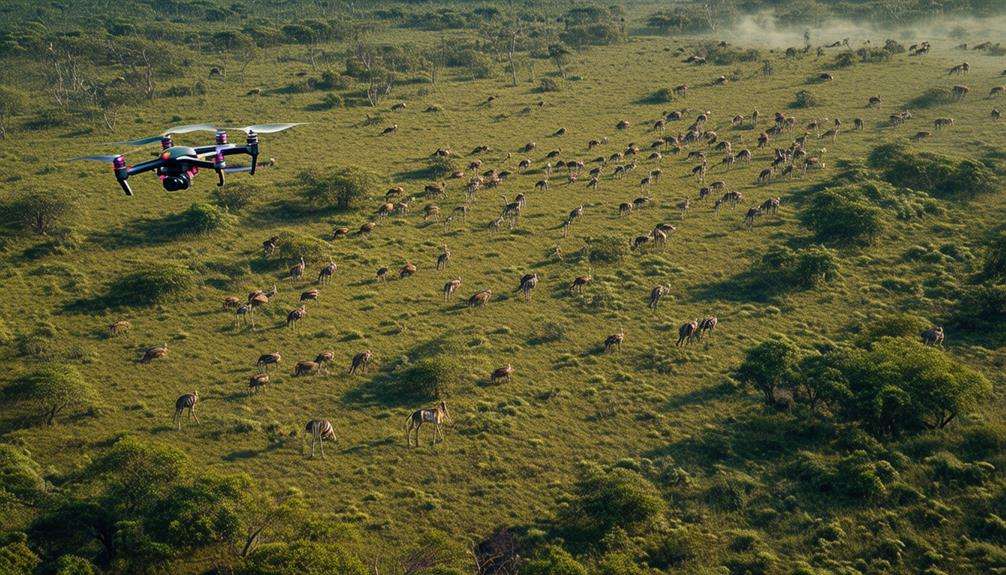When Did Drones Become Weapons?
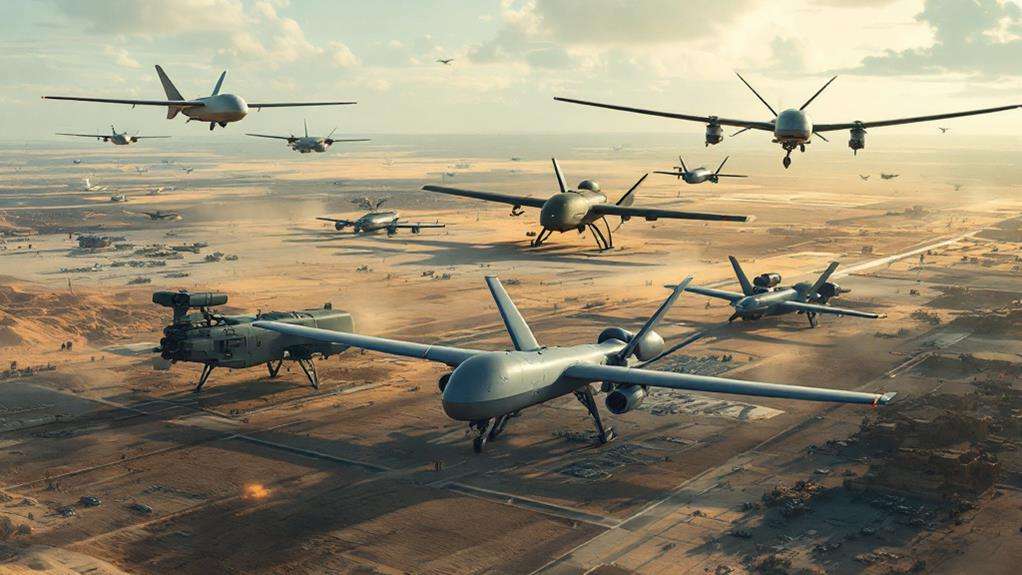
Drones became weapons around the year 2000, during the War on Terror. Although their history dates back to World War I, the shift to armed drones was significant at this time. The MQ-1 Predator, equipped with Hellfire missiles, marked a pivotal moment, transitioning drones from reconnaissance to precision combat tools. The first missile strike by a drone occurred in Yemen in November 2002. This development revolutionized military tactics, sparking debates over ethics and civilian safety. As you explore further, you'll discover how this transformation shaped modern warfare and its implications today.
Key Takeaways
- Drones became weaponized with the introduction of the MQ-1 Predator equipped with Hellfire missiles in the late 1990s.
- The U.S. military began arming drones with missiles around 2000, marking a significant shift in drone usage.
- The first major drone strike occurred in November 2002 in Yemen, showcasing drones as offensive weapons.
- Drones evolved from surveillance tools to lethal weapons, particularly during the War on Terror post-9/11.
- Armed drones have raised ethical concerns due to civilian casualties and the lack of formal war declarations.
Early Uses of Drones in War
Since their inception, drones have gradually transformed warfare. You might be surprised to learn that their journey began as early as World War I. The Hewitt-Sperry Automatic Airplane demonstrated the potential of these unmanned aircraft for combat, setting the stage for future developments. The Queen Bees during the interwar period were a testament to early drone versatility, influencing subsequent advancements. Fast forward to World War II, and drones started being used for more than just experimental purposes. The U.S. Navy employed radio-controlled drones like the Radioplane OQ-2, primarily for target practice and training, marking a significant step in their evolution.
The Cold War era saw drones take on a new role in reconnaissance. Equipped with cameras, these unmanned aircraft gathered crucial intelligence, although their potential as armed drones was already being explored with models such as the Ryan Firebee. This period highlighted the expanding scope of drones beyond mere observation tools.
Then came the Vietnam War, where drones were utilized extensively for reconnaissance missions. Their ability to gather real-time intelligence led to their integration into combat support roles. This marked a pivotal moment, as drones moved from passive roles into more active and armed capacities, setting the foundation for their modern military uses.
World War II Developments
During World War II, the development of drones took a significant leap forward as they moved from experimental tools to practical military assets. The U.S. Navy began using radio-controlled aircraft like the TDR-1 drone, initially designed for target practice. These drones soon proved their worth in combat, capable of delivering munitions, marking one of the first times unmanned aerial vehicles were used as weapons. The introduction of drones during this period also laid the foundation for future technological advancements, such as the integration of AI and machine learning, which would later enhance autonomous operations.
Meanwhile, the U.S. Army embraced the Radioplane OQ-2, created by Reginald Denny, as its first mass-produced drone. Nearly 15,000 units were manufactured, primarily for target training and reconnaissance missions, showcasing their versatility. These unmanned devices became a crucial part of military strategies, offering new ways to engage and observe the enemy.
In operations like Aphrodite, modified bombers such as the B-17s and B-24s were repurposed as aerial torpedoes, highlighting early attempts to use drones in direct combat roles. By the war's end, drones like the Ryan Firebee were tested for reconnaissance and combat support. As you see, these developments laid the groundwork for the evolving role of drones in military operations.
Cold War Advancements
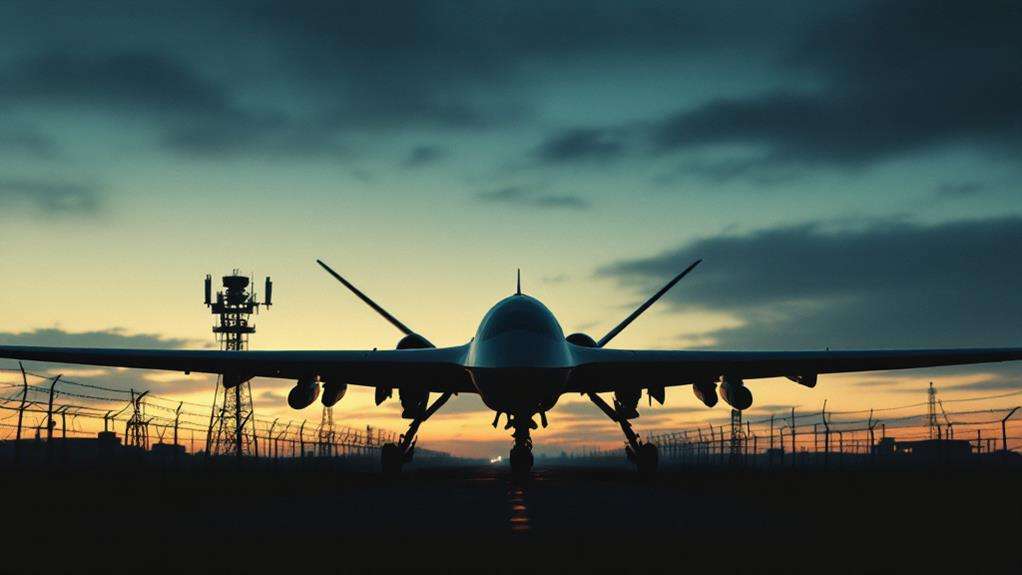
The Cold War era witnessed significant advancements in drone technology, fundamentally transforming their role in military operations. During this time, the U.S. began using unmanned aerial vehicles (UAVs) for intelligence gathering, a pivotal shift that set the stage for their future as weapons. The development of the Radioplane OQ-2 in the early 1940s marked the first large-scale production of drones. Initially used for target practice, the Radioplane OQ-2 demonstrated the potential for broader military applications.
By the late 1950s, these drones evolved beyond basic functions. Equipped with film cameras, they conducted reconnaissance missions over enemy territories, showcasing their strategic military value. This period highlighted an increased focus on enhancing drone reliability and operational range, crucial in integrating them into modern warfare.
While the introduction of armed drones for targeted strikes didn't occur until the 2000s, the foundational advancements during the Cold War were essential in this evolution. The period's technological progress paved the way for drones to become a staple in military arsenals. The Cold War undeniably played a critical role in transforming UAVs from practice tools to indispensable elements of military strategy.
Vietnam War Tactical Shifts
Building on the technological strides of the Cold War, the Vietnam War marked a pivotal moment where drones began to prove their strategic value in military operations. During this conflict, UAVs emerged as essential tools for reconnaissance, reducing risks to pilots and providing critical intelligence. The Ryan 147B drone, for instance, executed 3,435 missions, highlighting the tactical value of unmanned systems in surveillance over hostile zones.
| Aspect | Details | Importance |
|---|---|---|
| UAV Model | Ryan 147B | High mission success rate |
| Mission Count | 3,435 | Extensive deployment |
| Main Function | Reconnaissance | Intelligence gathering |
| Equipment Used | Film cameras | Real-time imagery |
| Tactical Outcome | Reduced pilot risk | Safer operations |
By incorporating film cameras, these military drones captured real-time imagery, essential for planning operations and improving strategic decision-making. This period marked a shift from traditional aircraft to advanced unmanned systems, setting a foundation for future developments.
The success of UAVs in Vietnam sparked interest in their potential as weapons platforms, paving the way for future combat drones. Although primarily used for reconnaissance, the tactical value demonstrated during the Vietnam War was undeniable, leading to innovations that would eventually transform drones into instruments of warfare.
Post-Vietnam Innovations
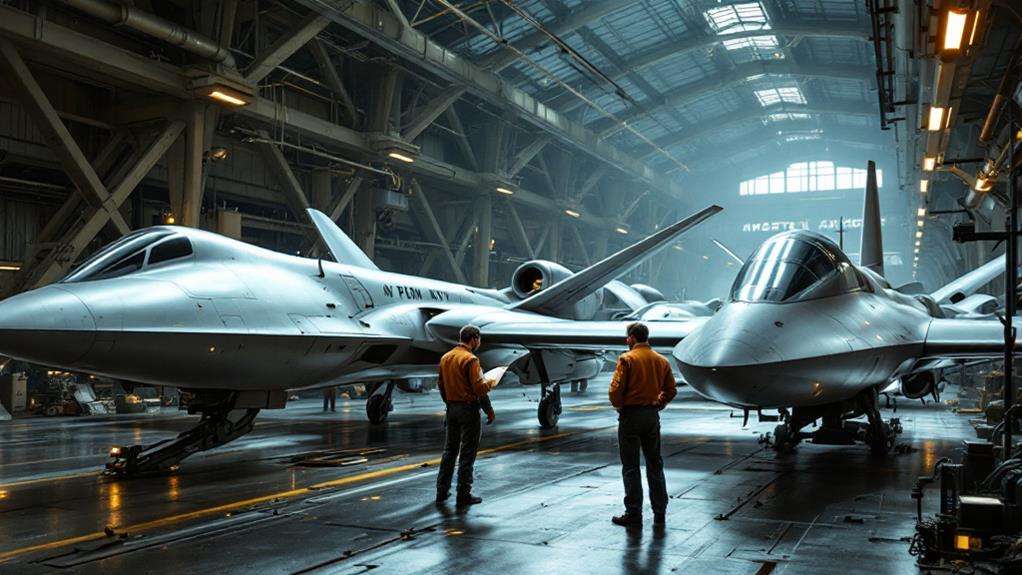
Advancements in drone technology surged after the Vietnam War, reshaping military strategy and capabilities. The U.S. military began enhancing these technologies, paving the way for armed UAVs to participate in combat operations. A significant breakthrough came with the MQ-1 Predator in the late 1990s. This innovation was a game-changer, equipped with Hellfire missiles, it could conduct precise targeted strikes. The MQ-1 Predator's ability to be operated via remote control drastically changed how you viewed combat operations, transitioning from traditional warfare to more strategic, precision-based tactics.
Drones in the War on Terror
Few technologies have transformed modern warfare as profoundly as drones. In the War on Terror, unmanned aerial vehicles (UAVs) became indispensable tools for executing targeted strikes. Around the year 2000, the U.S. military began arming drones with missiles, marking a significant shift in military tactics. The first high-profile use of this technology took place in November 2002, when a drone strike targeted Qaed Salim Sinan al-Harethi in Yemen. This event signaled a new era of warfare, where drones played a pivotal role in military strategy.
By 2010, the Obama administration had expanded drone operations, conducting strikes in at least seven countries without formal war declarations, including Pakistan, Yemen, and Somalia. Drones like the MQ-1 Predator and MQ-9 Reaper were extensively used for intelligence, surveillance, and reconnaissance (ISR) missions. These UAVs provided critical real-time data that enhanced military operations and decision-making processes.
However, the use of drones for targeted killings has raised significant ethical concerns. Reports indicate that drone strikes have resulted in civilian casualties, potentially numbering in the hundreds to thousands. As drones continue to shape the War on Terror, their impact on civilian populations and the ethical implications remain subjects of intense debate.
Ethical Implications of Armed Drones
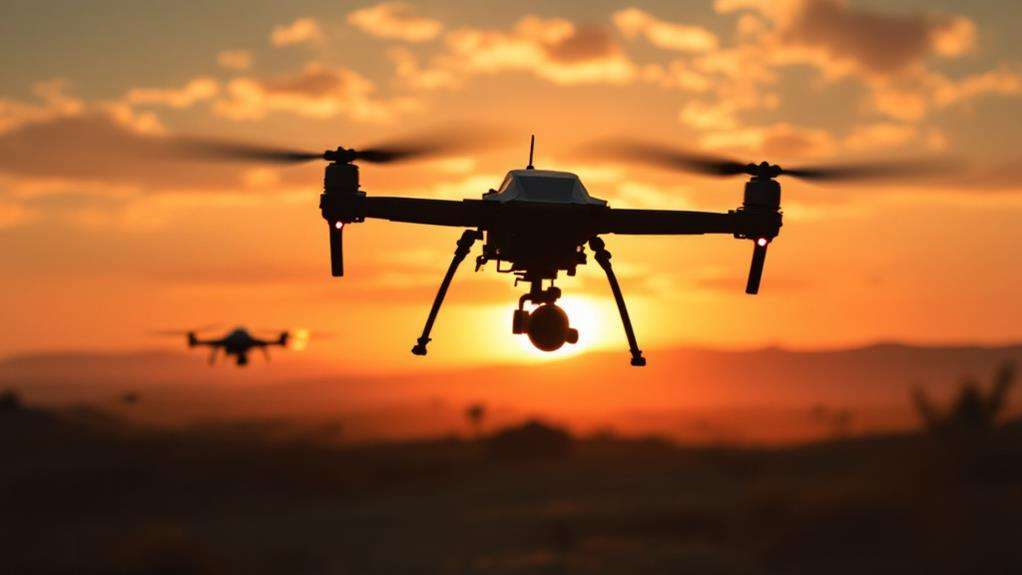
As drones became integral tools in the War on Terror, their evolution from surveillance assets to armed vehicles sparked heated debates about their ethical implications. Armed drones, initially used for targeted strikes against high-profile targets, have raised significant ethical concerns. The legality of engaging in drone warfare without formal declarations of war is hotly contested. When drone strikes escalate, as they did significantly by 2010, the risk of civilian casualties increases, causing moral dilemmas about the conduct of combat operations.
Civilian casualties from drone strikes range from hundreds to thousands, sparking outrage and questioning the morality of these operations. Critics argue that such actions can lead to anti-American sentiment in the regions affected. This sentiment often fuels recruitment for militant groups, potentially exacerbating extremism rather than curbing it. The use of armed drones in non-combat zones challenges the traditional definitions of warfare and raises questions about accountability and transparency.
The ethical concerns surrounding drone warfare are complex and multifaceted. As you consider these issues, think about the balance between national security and the potential for unintended consequences that might arise from the continued use of this controversial technology.
Future of Drone Warfare
In the rapidly evolving landscape of military technology, drones are poised to redefine the future of warfare. Initially utilized for surveillance, drones quickly transitioned into formidable weapons post-9/11, executing targeted strikes with lethal precision. Looking ahead, the expansion of drone capabilities is inevitable. The military envisions advanced drones that are not only faster but also more autonomous, capable of executing combat missions with minimal human intervention.
As these unmanned systems become more integrated into military strategies, ethical concerns rise. Autonomous drones raise questions about accountability and the morality of machines making combat decisions. Will these drones be able to distinguish between combatants and civilians during strikes? Such dilemmas challenge traditional warfare ethics and demand robust regulations.
The expansion of drone warfare also includes potential high-speed fighter drones, which could revolutionize aerial combat. The presence of these drones in conflict zones is expected to increase, given their proven track record in the War on Terror across regions like Yemen and Somalia. You must consider the implications of this technological shift as drones continue to shape modern warfare, emphasizing the need for careful ethical considerations and strategic planning.


